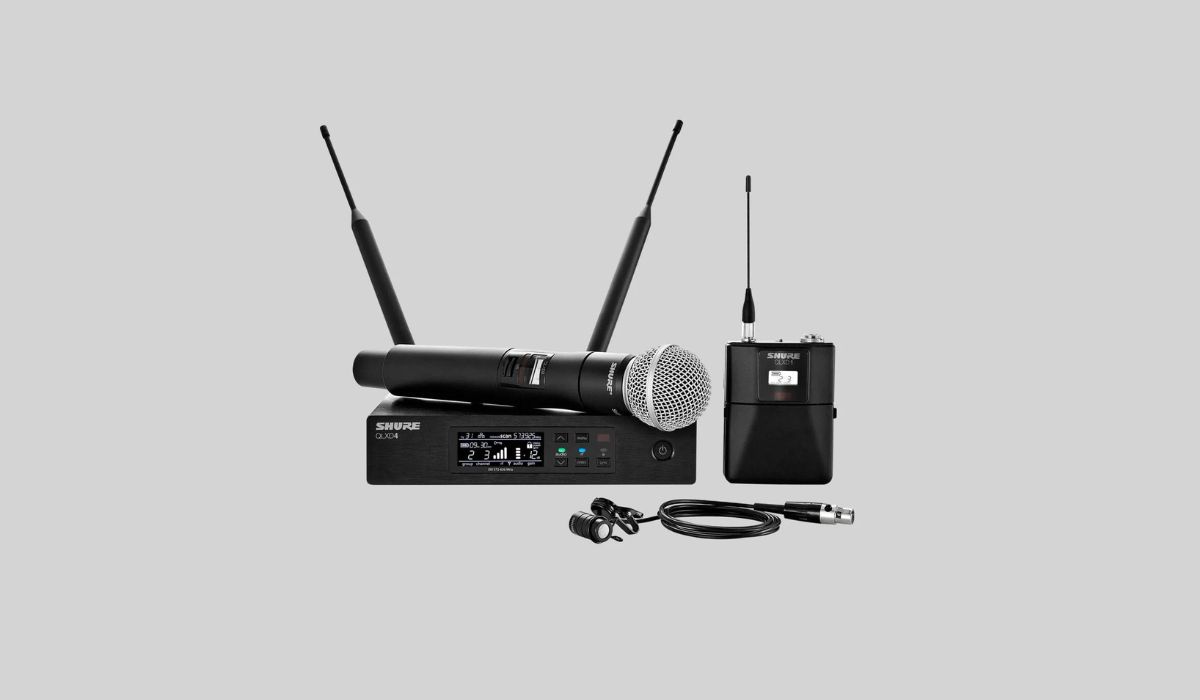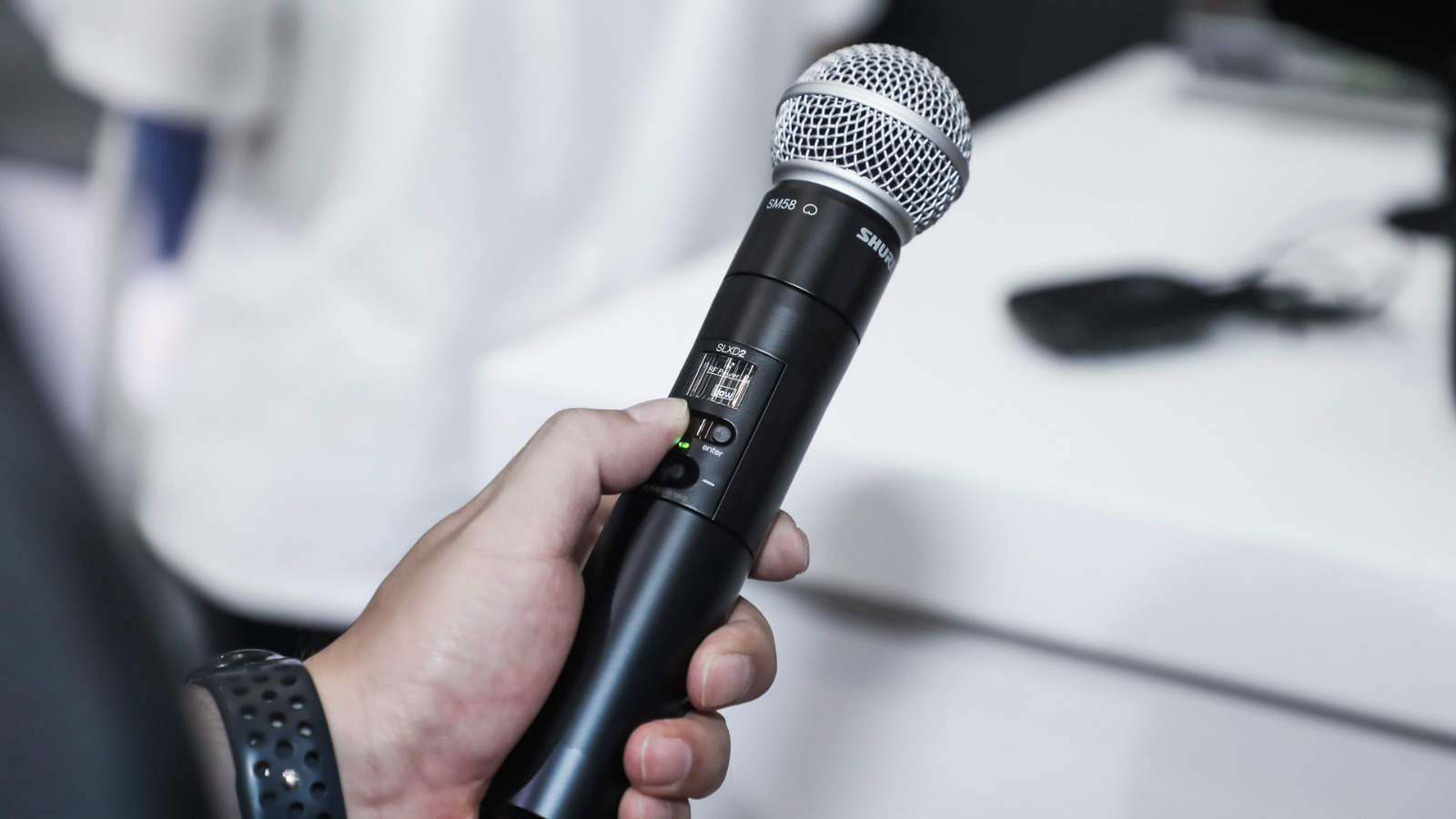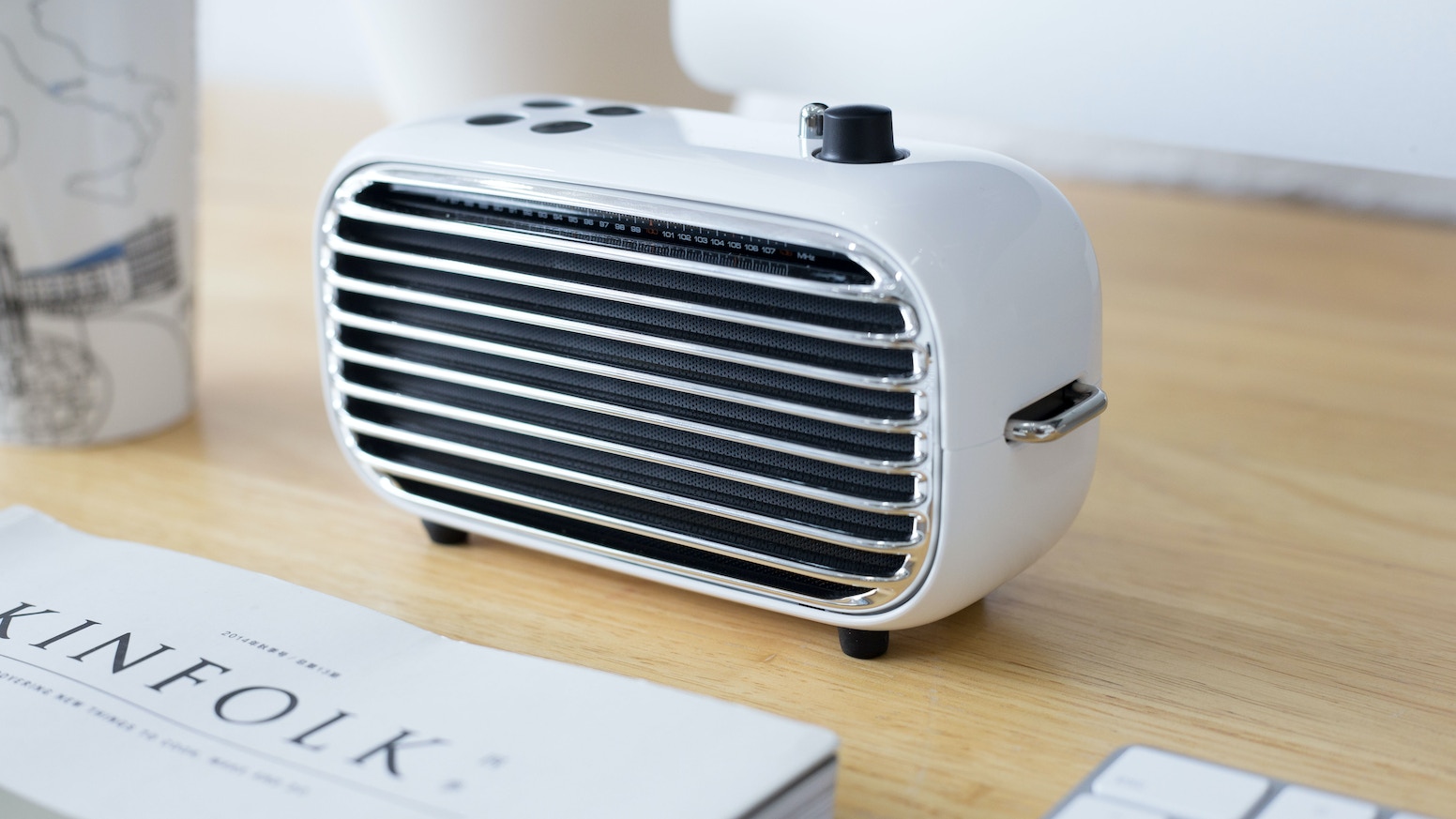Home>Devices & Equipment>Microphone>What Is The Best Wireless Microphone


Microphone
What Is The Best Wireless Microphone
Published: February 16, 2024
Discover the top wireless microphone options for crystal-clear sound quality and seamless performance. Find the perfect microphone for your needs and take your audio to the next level.
(Many of the links in this article redirect to a specific reviewed product. Your purchase of these products through affiliate links helps to generate commission for AudioLover.com, at no extra cost. Learn more)
Table of Contents
Introduction
Welcome to the fascinating world of wireless microphones! Whether you’re a professional musician, public speaker, fitness instructor, or simply someone who loves karaoke, the right wireless microphone can make a world of difference in your performance. In this comprehensive guide, we’ll delve into the realm of wireless microphones, exploring their functionality, the key factors to consider when choosing one, and a curated list of top wireless microphones currently available in the market.
Wireless microphones have revolutionized the way we communicate, entertain, and express ourselves. They offer unparalleled freedom of movement, eliminating the hassle of tangled cables and allowing performers to roam the stage or venue without limitations. This newfound mobility has transformed live performances, presentations, and events, enhancing the overall experience for both performers and audiences.
As technology continues to advance, the capabilities and features of wireless microphones have evolved significantly. From improved signal stability to extended battery life and seamless connectivity, today’s wireless microphones are designed to meet the diverse needs of users across various industries. Whether you’re a vocalist aiming to captivate a stadium audience or a corporate professional delivering a compelling presentation, the right wireless microphone can elevate your performance to new heights.
Throughout this guide, we’ll navigate the intricate landscape of wireless microphones, shedding light on the essential aspects that can guide your decision-making process. By understanding the nuances of wireless microphone technology and performance, you’ll be empowered to make an informed choice that aligns with your specific requirements and preferences.
So, if you’re ready to embark on a journey through the realm of wireless microphones, fasten your seatbelt and get ready to explore the myriad options available to help you amplify your voice and leave a lasting impression.
Understanding Wireless Microphones
Wireless microphones are marvels of modern technology, offering the convenience of unrestricted movement without compromising audio quality. At their core, wireless microphones function much like their wired counterparts, capturing sound waves and converting them into electrical signals. However, instead of transmitting these signals through physical cables, wireless microphones utilize radio frequency (RF) or digital transmission to send the audio data to a receiver unit.
One of the primary components of a wireless microphone system is the transmitter, which is typically integrated into the microphone body or housed in a separate pack that can be clipped onto clothing. The transmitter is responsible for encoding the audio signal and wirelessly transmitting it to the receiver. On the other end, the receiver unit, connected to a sound system or recording device, captures the transmitted signal and converts it back into audible sound.
When it comes to wireless microphone technology, there are two main transmission formats: analog and digital. Analog wireless systems modulate the audio signal onto a carrier frequency, which is then transmitted to the receiver. While analog systems have been widely used for decades and offer simplicity and affordability, they are susceptible to interference and may not provide the same level of audio fidelity and signal stability as digital systems.
On the other hand, digital wireless microphone systems convert the audio signal into digital data before transmission, offering enhanced signal integrity, extended range, and resistance to external interference. Digital technology has significantly raised the bar in terms of audio quality and reliability, making it a preferred choice for many professionals and enthusiasts alike.
Understanding the intricacies of wireless microphone technology, including frequency bands, signal-to-noise ratio, and transmission range, is crucial for selecting the right microphone to suit your specific needs. Whether you’re performing on stage, leading a fitness class, or delivering a presentation, having a solid grasp of wireless microphone fundamentals empowers you to make informed decisions and maximize the potential of your audio setup.
Now that we’ve laid the groundwork for comprehending wireless microphone technology, it’s time to explore the key factors that should influence your decision when choosing a wireless microphone that aligns with your requirements and aspirations.
Factors to Consider When Choosing a Wireless Microphone
When venturing into the realm of wireless microphones, several crucial factors warrant consideration to ensure that you select the optimal microphone for your specific needs and preferences. By evaluating these key aspects, you can make an informed decision that aligns with your performance requirements and technical specifications.
- Frequency Range and Interference Resistance: Assess the frequency range supported by the wireless microphone system, taking into account the available frequency bands and the potential for interference from other wireless devices. Opting for a system with a broad frequency range and robust interference resistance can enhance the reliability and stability of your audio transmission, especially in crowded or challenging RF environments.
- Audio Quality and Signal Integrity: Prioritize wireless microphone systems that offer exceptional audio fidelity and signal integrity. Factors such as dynamic range, signal-to-noise ratio, and low latency play pivotal roles in ensuring that your voice or instrument is faithfully reproduced without distortion or artifacts, thereby elevating the overall quality of your performance.
- Transmitter Design and Durability: Consider the design and build quality of the microphone transmitter, particularly if you anticipate rigorous or dynamic usage scenarios. Look for transmitters that are ergonomically designed, lightweight, and resilient, offering features such as water resistance and robust construction to withstand the demands of live performances or outdoor activities.
- Battery Life and Power Management: Evaluate the battery life of the wireless microphone system, as well as the availability of convenient power management features such as rechargeable batteries, battery level indicators, and efficient power consumption. Reliable battery performance is essential for uninterrupted use during extended performances or events.
- Compatibility and Connectivity: Ensure that the wireless microphone system is compatible with your existing audio equipment and offers seamless connectivity options, such as XLR or 1/4-inch outputs, to interface with mixers, amplifiers, or recording devices. Additionally, explore the potential for wireless system expansion and integration with other audio peripherals.
- User-Friendly Operation and Setup: Look for wireless microphone systems that prioritize user-friendly operation, intuitive setup procedures, and clear user interfaces. Streamlined configuration processes, easy-to-navigate menus, and ergonomic controls contribute to a hassle-free and efficient user experience, particularly for performers and presenters.
By carefully considering these essential factors, you can navigate the diverse landscape of wireless microphone options with confidence, pinpointing the features and capabilities that align with your specific requirements and performance objectives. Now, let’s delve into a curated list of top wireless microphones currently making waves in the market, offering a blend of cutting-edge technology, reliability, and exceptional audio performance.
Top Wireless Microphones on the Market
As the demand for high-quality wireless microphones continues to soar, a diverse array of top-notch options has emerged, catering to the needs of performers, presenters, instructors, and audio enthusiasts. Let’s explore a selection of top wireless microphones renowned for their exceptional performance, innovative features, and reliability.
1. Shure SM58 Wireless Microphone System
The Shure SM58 is a legendary dynamic vocal microphone that has earned acclaim for its robust construction, clear sound reproduction, and time-tested reliability. When paired with a high-quality wireless system, such as the Shure BLX series, the SM58 delivers crystal-clear vocals with impressive feedback rejection, making it a staple choice for live performances and professional applications.
2. Sennheiser EW 100 G4 Wireless System
Sennheiser’s EW 100 G4 series encompasses a range of wireless microphone systems tailored for diverse needs, including vocal, instrument, and presentation applications. With its intuitive operation, exceptional sound quality, and adaptive wireless transmission, the EW 100 G4 systems offer versatility and reliability, making them a popular choice among performers and audio professionals.
3. Audio-Technica ATW-2120a Wireless Handheld Microphone System
Renowned for its outstanding audio fidelity, rugged design, and user-friendly operation, the Audio-Technica ATW-2120a system is a go-to option for vocalists and presenters seeking a dependable wireless microphone solution. The system’s advanced features, such as automatic frequency scanning and infrared sync, streamline setup and ensure seamless, interference-free performance.
4. Shure PGXD24/SM58 Digital Wireless System
Combining the iconic Shure SM58 microphone with cutting-edge digital wireless technology, the PGXD24/SM58 system delivers exceptional clarity, extended range, and reliable signal stability. With features such as 24-bit digital audio and strong encryption, this system offers peace of mind and unparalleled performance for vocalists and presenters alike.
5. AKG WMS40 Mini Wireless Vocal Set
The AKG WMS40 Mini system stands out for its compact, budget-friendly design and impressive audio quality. Ideal for vocal performances and presentations, this wireless microphone system offers plug-and-play simplicity, reliable operation, and a wireless range of up to 65 feet, making it a versatile and cost-effective choice for various applications.
These top wireless microphone systems represent a fraction of the extensive offerings available in today’s market. Whether you prioritize audio fidelity, ruggedness, ease of use, or seamless connectivity, there’s a wireless microphone system tailored to meet your specific needs and elevate your performance to new heights.
Conclusion
Embarking on the quest to find the best wireless microphone entails a journey of discovery, innovation, and the pursuit of audio excellence. As we’ve navigated through the intricacies of wireless microphone technology and explored the essential factors to consider when selecting a wireless microphone, it’s evident that the market offers a wealth of options tailored to diverse performance requirements and preferences.
From the legendary Shure SM58 to the feature-rich Sennheiser EW 100 G4 and the budget-friendly AKG WMS40 Mini, the landscape of top wireless microphones is rich with choices, each offering a unique blend of performance, reliability, and innovation. Whether you’re a seasoned vocalist commanding the stage, a fitness instructor inspiring a class, or a corporate presenter captivating an audience, the right wireless microphone can serve as your trusted ally, empowering you to deliver compelling performances with unwavering audio quality and freedom of movement.
As technology continues to evolve and shape the future of wireless audio, we can anticipate further advancements in wireless microphone systems, including enhanced connectivity, extended battery life, and refined audio processing capabilities. These developments will undoubtedly enrich the landscape of wireless microphones, offering users an even broader spectrum of options to amplify their voices and artistic expressions.
Ultimately, the quest for the best wireless microphone is a deeply personal and nuanced endeavor, influenced by individual preferences, performance demands, and technical specifications. By embracing a thorough understanding of wireless microphone technology and carefully evaluating the key factors that define audio performance, you can confidently navigate the market, uncovering the perfect wireless microphone system to complement your unique talents and aspirations.
So, whether you’re preparing to embark on a world tour, lead a captivating seminar, or simply elevate your karaoke game, the world of wireless microphones eagerly awaits your exploration. Armed with knowledge, passion, and a discerning ear for audio excellence, you’re poised to select a wireless microphone that will become an indispensable companion on your journey to sonic mastery.











